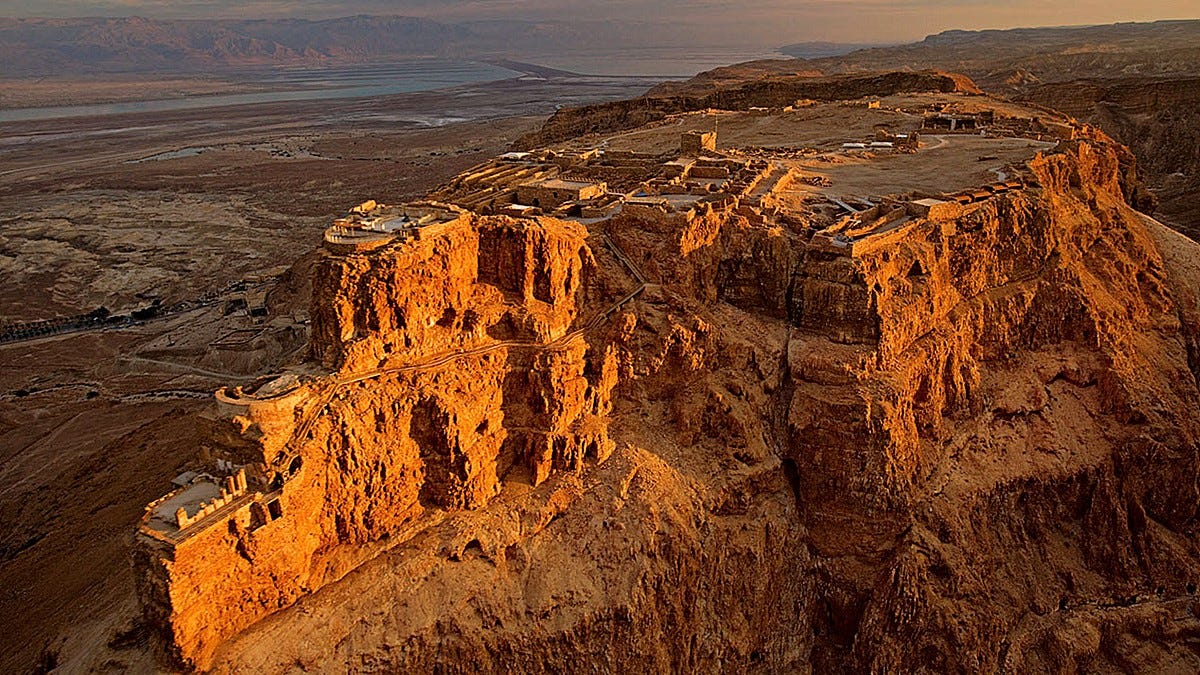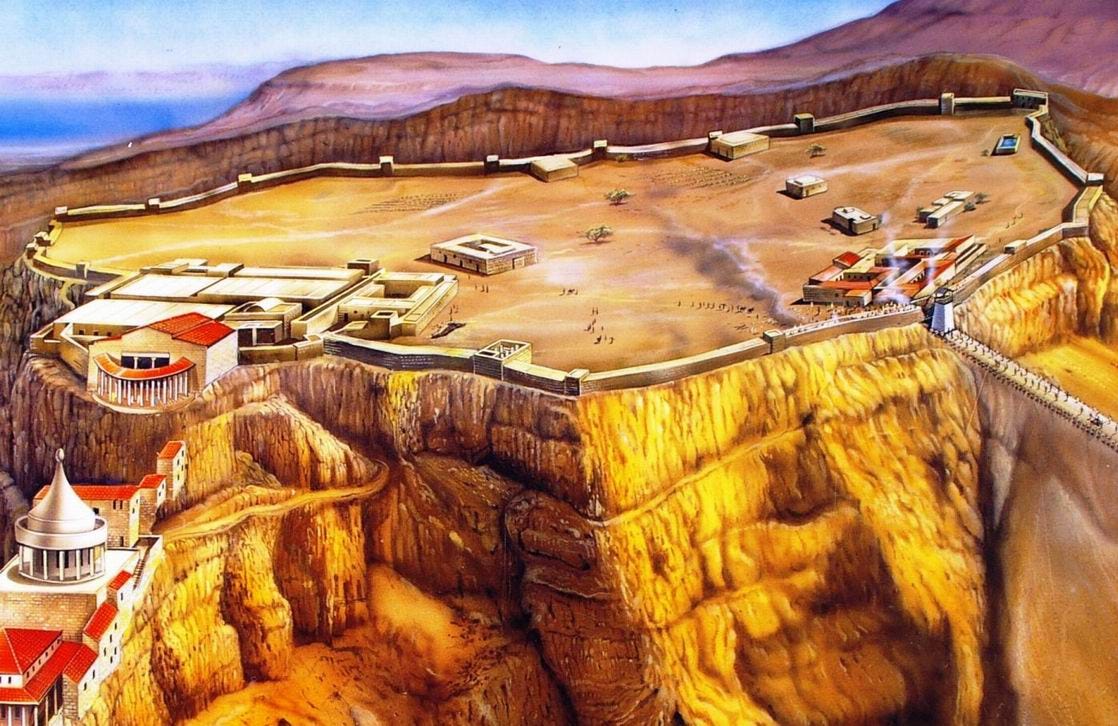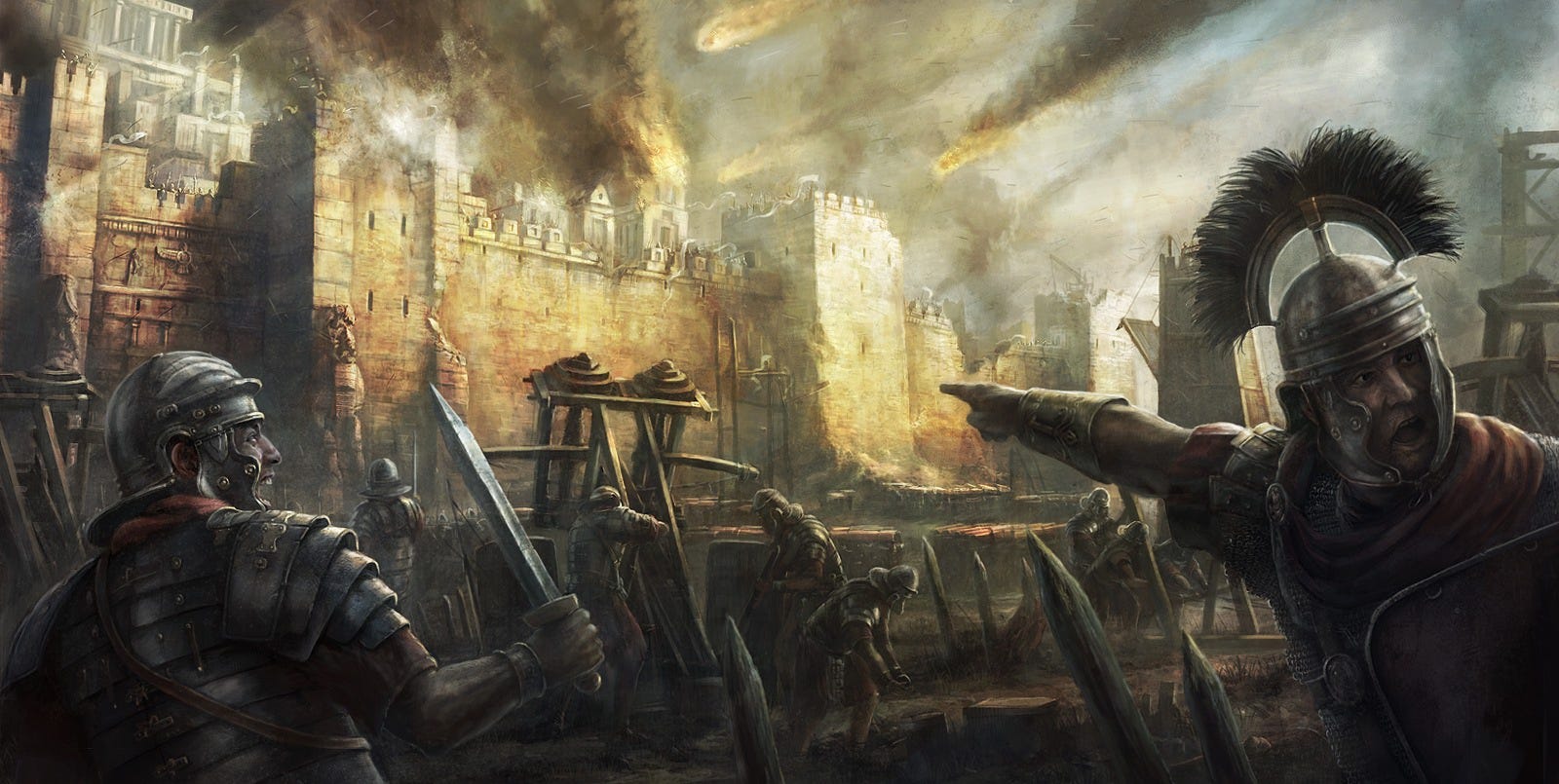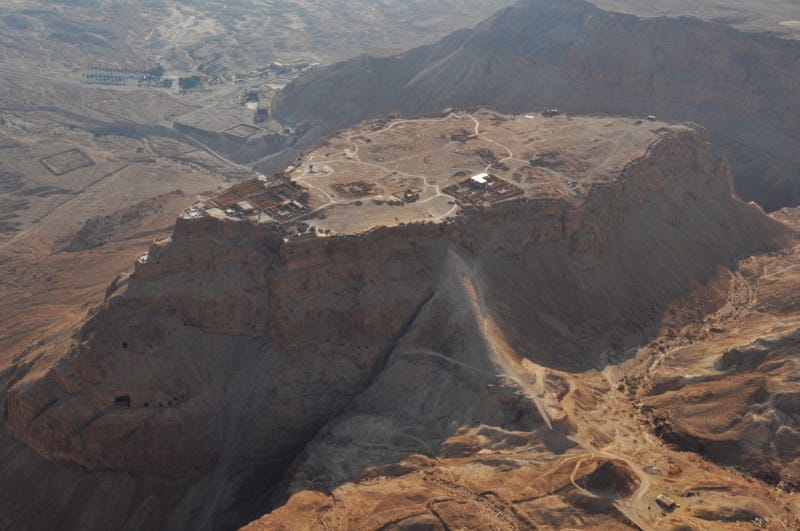|
Ocnus.Net Research The Roman army versus the Jewish fanatics
The Masada fortress is one of the most visited Israeli attractions. It is also an Israeli national symbol. Every inductee to the Israel Defense Forces takes the oath of loyalty which ends with:
To understand why the military oath ends with Masada, we need to go almost 2,000 years back in history. A desert fortress with luxurious swimming pools
Masada, meaning the ‘strong foundation’ in Hebrew, lies in the middle of a desert. Its location is about an hour’s drive southeast of Jerusalem in modern-day Israel. Jewish king Herod the Great (72 BC-4 BC) fortified Masada to serve as a refuge in case of revolt. He also added two palaces to create a luxurious winter resort for himself. The construction lasted from 37 to 31 BC. The fortress was accessible only by three narrow paths, wide enough for only one man. The paths zig-zagged towards the top. Such narrow and steep access made a potential front assault virtually impossible. Herod fortified the plateau with walls that stood to the height of four meters. The walls measured 1,300 meters (4,300 feet) in length and had many towers. The Jews carved out enormous cisterns to store drinking water. They also added several luxurious swimming pools and private baths.
The granaries stored enough food for years aided by the dry climate, which extended the food expiry date. Besides, the defenders could grow food on the plateau itself. What would be the chances of capturing such a fortress without gunpowder and canons? Zero. Well, almost zero! The Roman army possessed a formidable knowledge of siege technology. It all started with the Great Jewish Revolt and the Sicarii fanatics
In 6 AD, the Roman Emperor Augustus annexed the Jewish client state as the province of Judea into the empire. Right from the start, there were tensions between the Jews and the Romans over religion and taxation. After the Romans had desecrated the Jewish temple in Jerusalem in 66 AD, the Jews rebelled. The Great Jewish Revolt (66-73) shocked the Roman Empire. Two future Roman emperors, Vespasian and Titus, fought against the relentless Jews. After the capture of Jerusalem in 70 AD, the Romans quelled the rebellion. However, there were still strongholds under the control of the rebels. The most formidable of them was the Masada fortress. The Masada was in the hands of the Sicarii (meaning the ‘dagger men’). which were a fanatical Jewish faction. The group used violence and terror to oppose the Roman rule. They preferred to use their daggers to kill the Roman sympathizers in public places.
The siege of a nearly impregnable fortress
Roman general Lucius Flavius Silva began the Siege of Masada in 73 AD. He had 9,000 soldiers and 6,000 prisoners. The Romans built a circumvallation wall. The legionaries completed the 3.6 kilometers (2.7 miles) long wall with five forts within one week.
However, Masada had an enormous supply of food and water. Besides, the Sicarii could grow more food on the plateau itself. Silva realized the defenders would never run out of supplies. The Roman army would be just waiting in the middle of the desert for years. Thus, the Romans built a siege ramp on the western side of the fortress in less than three months. The ramp was 600 meters (1,968 feet) long and 114 meters (375 ft) high. Then, they built a siege tower with a battering ram and pushed it up to the wall. Soon, the wall crushed and the bloodthirsty Roman soldiers invaded the fortress. But what they saw inside of the fortress left them speechless… All defenders of the Masada committed a mass suicideOnce the Romans breached the walls and rushed inside, they were expecting a fierce battle. After all, the Sicarii were fanatical fighters. Instead, everything was quiet. There was no battle cry. The Roman soldiers would remember for the rest of their lives the scene they witnessed. All the defenders were dead. Slain. Out of 967 defenders of Masada, 960 committed mass suicide on the 15th of April 73 to avoid the Roman capture and slavery. Only two women and five children, who had hidden in the cisterns, were alive to tell what had happened. ConclusionThe siege of Masada is a testament to the enormous Roman military power. Source: Ocnus.net 2020 |




